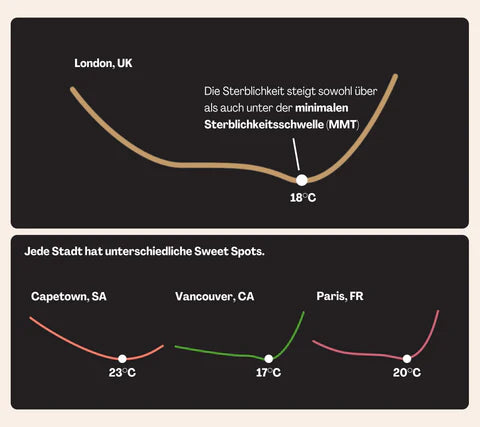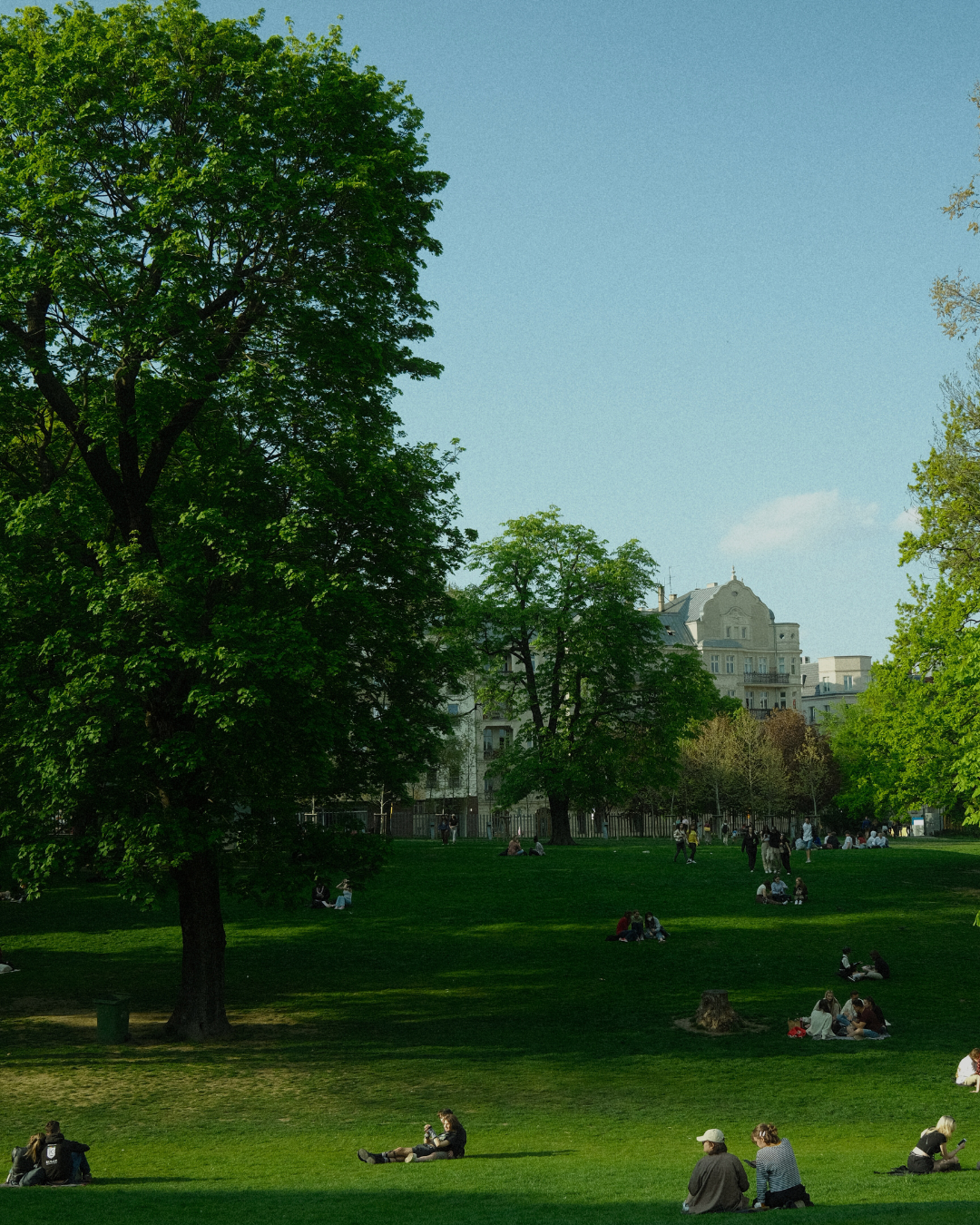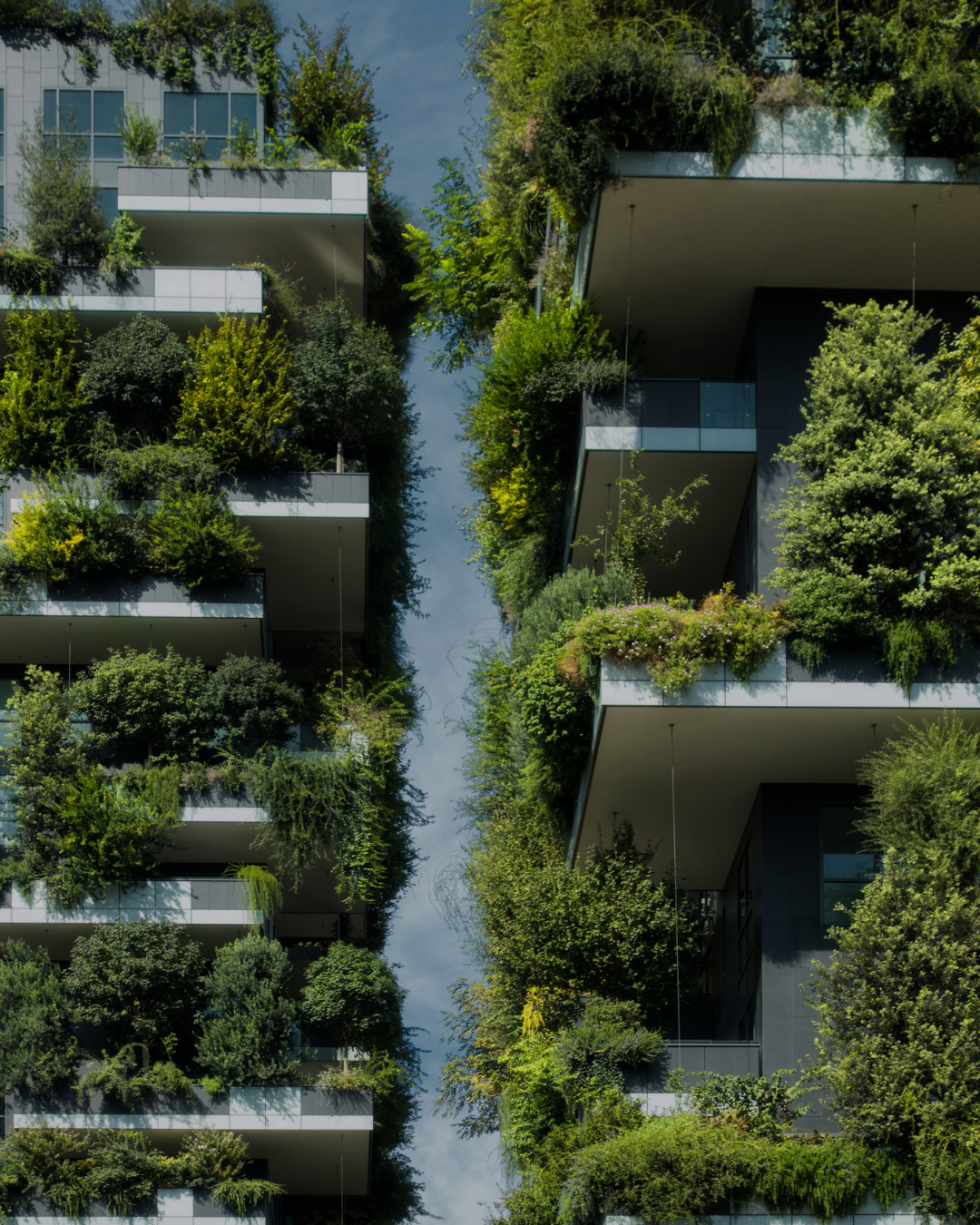In cities, it is often significantly hotter in summer than in rural areas. This is due to the so-called urban heat island effect: concrete, asphalt, and other sealed surfaces store enormous amounts of solar energy during the day and release it only slowly at night. Thus, it remains hot in cities even after sunset, while rural areas are already cooling down. Sealed surfaces, in particular, can heat up to 50–60 °C or more – this is far above the ambient air temperature and places a massive strain on the body [1][2].
In addition, tall buildings and narrow urban canyons hinder air circulation, causing heat to build up in the city. Parks, trees, and green spaces that could provide cooling are often scarce. These factors make cities heat traps, where the risk of health problems is particularly high.
Another problem: the so-called "minimum mortality temperature" (MMT)—the temperature at which the mortality rate is lowest—vary by region. People in cool climates have adapted to lower temperatures, while in hotter countries the MMT is higher [3][4]. However, cities drive temperatures far beyond the local MMT, massively increasing the risk of heat-related deaths.










